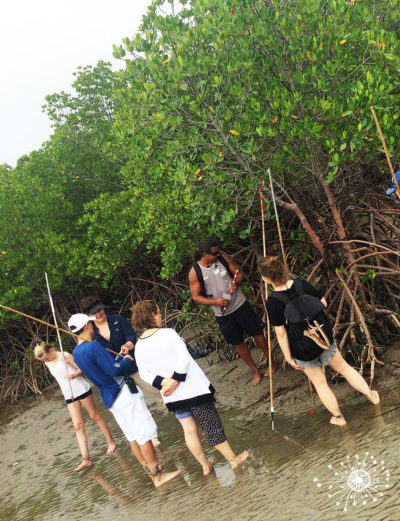
Welcome to Country
Originally Australia was populated only by the Indigenous people of Australia – Aboriginal and Torres Strait Islanders. There were many different communities made up of people who spoke many different languages all with their own cultural beliefs, practices and traditions. Indigenous people’s knowledge has been passed down by the Elders to the younger people through songs, dance, art and storytelling in an unbroken chain spanning more than 60,000 years.
Indigenous Australians cannot be considered as one homogenous group. Prior to 1788 there were approximately 250 language groups with an estimated population of around 750,000 people. They divided the land using geographic boundaries such as rivers, lakes and mountains. There were no fences, or barriers as there are nowadays, only the traditional way of marking land ownership which, rather conveniently, led to the Europeans concluding that no one owned the land and claimed the new territory for the crown of England as Terra Nullius.
Today Indigenous people make up only 3% of the entire Australian population and only around 120 languages are still spoken and many are at risk of being lost as Elders pass away.
To pay our respect to the Traditional Owners of the land and to gain a better understanding of the oldest living culture of humankind, we are pleased to suggest you some itineraries that will help you gain some insights on the where Australia REALLY began.
Ngunbay (Kuranda) in the Land of the Djabugay People
Djabugay people have been since the beginning of times, hunter-gatherers and they are the Bama – Rainforest Aboriginal people. Their connection with the land is key to survival and and that connection remains as strong and vitally important to these people today as it ever did.
Today we will meet the Djabuganydji people to learn about their Dreamtime Story, their laws, food and medicine. We will have the chance to learn how to throw spears and boomerangs that were traditionally hunting weapons. We will hear the sound of the didgeridoo playing accompaniment to a traditional dance and we will have the meaning of body paintings explained along with other items of cultural significance.
We will complete the visit by gliding above the Barron Gorge National Park aboard the Cable car Skyrail to Kuranda, where we will have some lunch and where we can walk about the village and the markets and also gain some insights into Djabuganji Art. From there we visit the impressive Din Din (Barron Falls) accessed along an easy and cool walk, surrounded by lush rainforest.
We acknowledge the Djabugay people, traditional custodians of the Kuranda area and beyond


The Daintree National Park and the KuKu Yalanji people
The Daintree National Park is the home of the Kuku Yalanji Aboriginal people, traditional custodians of this area and beyond. This is nature at its best and we will show you around to prove it.
Mangroves and Rainforest are two of the main ecosystems in the area that comprise the homelands of the Kuku Yalanji people. They are both key for the survival of the unique flora and fauna that inhabit this lands and for the traditional owners that still inhabit these lands with a strong spiritual connection to country.
Our itineraries always include a coastal, mangrove or rainforest tour guided by a Traditional Owner. Usually they are local Aboriginal families that are willing to explain the importance of their country and introduce guests to significant aspects of their cultural heritage.
The beach and mangrove tours involve traditional fishing and spear throwing and intimate insights into traditional uses of the diverse mangrove species. Walking barefoot on the beach and within the mangroves, it is an experience like no other that will change your mind about these unknown ecosystems so important for Saltwater Aboriginal people.
The rainforest experience is within the ancient Daintree Rainforest. Along a private access area, the Indigenous people of the Mossman area will guide us on the ‘Ngadiku Dreamtime Walk’ and perform a traditional ‘welcome to country’ smoking ceremony to introduce visitors to the ancestors that reside eternally in the land.
Here we will learn about culturally significant sites and will have traditional plant use and medicines explained to us along with their stories and key insights into their special relationship with this unique tropical environment.
We acknowledge the Kuku Yalanji people, traditional custodians of the Daintree National Park area and beyond

Get more tour info…
Because we believe there is no-one better to explain Indigenous culture than the Aboriginal people, so at Cadaghi we are committed to continue supporting Indigenous Business. Apart of the family groups that we are already working with, there are some brave, emerging indigenous operators in the area that we have begun following to, we wish them all the greater success in the future. Keep in touch with us as we add new itinerary inclusion.






